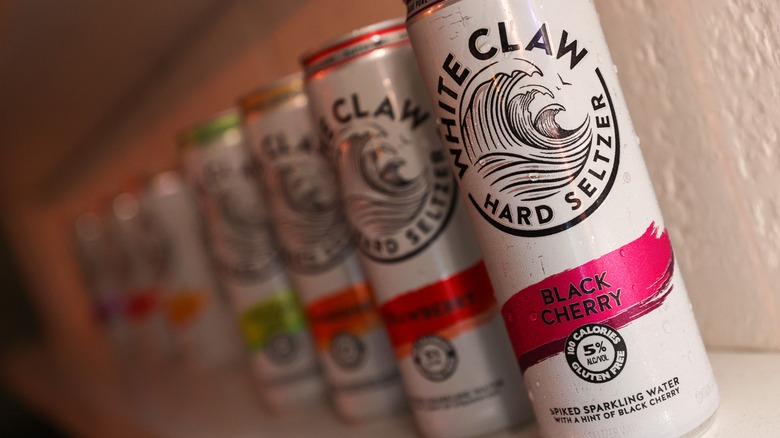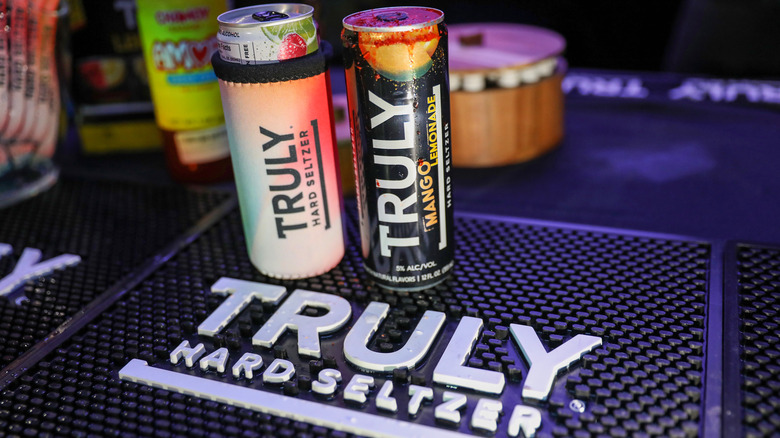The Most Common Way Hard Seltzers Are Made
It wasn't all that long ago when the only cans you could order at your local dive contained beer. Flavored malt beverage (FMB) may be a fairly young category, but it's taken the ready-to-drink (RTD) canned beverage sector by storm. The global hard seltzer market was valued at a whopping $18.97 billion in 2023, and that's only the beginning. High Noon sold 21.4 million cases in 2023 alone, the equivalent of $1.5 billion.
U.S.-based analytics firm Grand View Research predicts that the global hard seltzer market will enjoy a compound annual growth rate of 14.9% in volume from 2024 to 2030 for a total market value that will be over $49 billion by 2028. (In recent news, White Claw has even ventured into the non-alcoholic RTD canned beverage category.) But, for as many foodies who love and swear by it, how many folks know how hard seltzer is actually made?
Hard seltzers are produced from a blend of water, sugar, yeast, and flavoring. Within these simplistic parameters are myriad variables that set different brands apart. That alcoholic base is usually "fermented malt liquor," which is made from fermented cane sugar, and clocks in at around 4 to 6% alcohol by volume (ABV) — comparable to most non-IPA beers. Hard seltzers can also be brewed from malted barley, which is far less common.
Hard seltzers are sugar-based and ultra-scrubbed
In sugar cane fermentation, sugar is first dissolved in hot water and cooled. Then, the yeast is added in, plus a few added nutrients to fuel the active yeast. Those added nutrients are crucial for producing hard seltzer because, unlike brewing beer (which includes grains), sugar alone cannot adequately feed the yeast. From there, the fledgling brew gets filtered (often through a centrifuge or plate filters), scrubbed once more, and then cut with water to achieve the desired boozy potency.
Many distilleries use distilled or reverse osmosis water to ensure the most neutral taste possible. Once the flavoring gets added, the hard seltzer is force carbonated, canned, and ready to enjoy. Hard seltzers' FMB status is in many ways characteristic of the category, though not all hard seltzers are actually made with malt. White Claw's website states that its drinks are made from seltzer water, a gluten-free alcohol base, and fruit flavoring. As a brand representative told VinePair, "The alcohol in White Claw Hard Seltzer comes from fermented sugars derived from malted gluten-free grains."
Similarly, Topo Chico's Signature Margarita hard seltzer (4.5% ABV) uses an alcoholic fermented sugar base with "hints of real lime juice, salt, and tequila flavors" rather than actual tequila. But some brands, like High Noon (4.5% ABV), spike their seltzers with vodka, which is why you can find cans of High Noon at many local liquor stores. Cutwater also spikes its Ranch Water — a crisp, bubbly canned hard seltzer — with real tequila, giving it a higher ABV of 5.9%.

